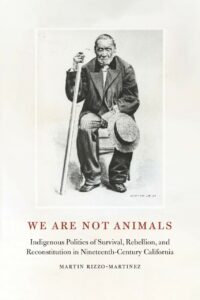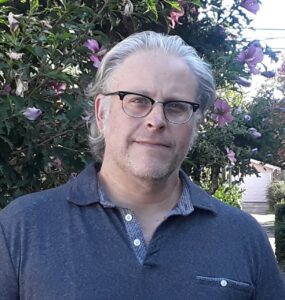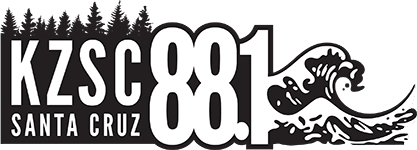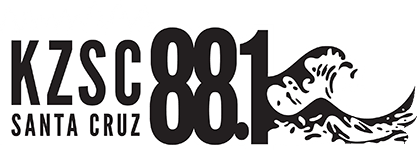
By John Malkin
The Santa Cruz Mission was established in 1791 and by 1793 a pan-tribal rebellion burned down some of the structures. In 1812 a native woman named Yaquenonsat led the assassination of Father Andrés Quintana at what became known as the “mission of padre killers.” These historic moments of local indigenous resistance to colonization are highlighted in a new book by Martin Rizzo-Martinez, “We Are Not Animals: Indigenous Politics of Survival, Rebellion, and Reconstitution in Nineteenth-Century California.” The book was published in February, 2022 by University of Nebraska Press and includes a forward by Amah Mutsun Tribal Band Chairman Valentin Lopez.
Martin Rizzo-Martinez studied Native literature and history at Cabrillo College with professor Stan Rushworth and in 2016 Rizzo-Martinez received his PhD in history at UCSC. “We Are Not Animals” is based on his dissertation. He co-hosts a podcast with Daniel Stonebloom, “Challenging Colonialism” and is a California State Parks Historian for the Santa Cruz District and helped create an interactive online exhibit about the El Camino Real mission bells; parks ca.gov/bells.
Part One: Interview with Martin Rizzo-Martinez on “We Are Not Animals: Indigenous Politics of Survival, Rebellion, and Reconstitution in Nineteenth-Century California (2022 – University of Nebraska Press)
Part Two: Interview with Martin Rizzo-Martinez on “We Are Not Animals: Indigenous Politics of Survival, Rebellion, and Reconstitution in Nineteenth-Century California (2022 – University of Nebraska Press)

LARGEST TRIBE was a NATION
Q: “What was life like for indigenous people in the Santa Cruz area before 1791?”
A: “The society that existed beforehand was a very sophisticated, interwoven society of small tribes; roughly around 200 people per independent autonomous tribe. Their territories were typically marked by watersheds; north of Santa Cruz were the Cotoni. In the Santa Cruz area were the Uypi, just south of here were the Aptos and there were quite a few other tribes. The largest tribe was in the Año Nuevo area, the Quiroste. The Spanish referred to them as a nation,” explained Rizzo-Martinez.
“Different tribes had very complex trade relationships with coastal tribes trading inland. They were trading all across the state of California into the Sierras and beyond. Down south, there were extensive trade networks happening throughout the Americas. California indigenous peoples had economic, social and political ties between different groups.
The spiritual world of indigenous Californians was a pluralistic one. They had different ceremonies and women’s spiritual societies with members from different tribes at specific sacred sites. Villages were often named after animals that were in abundance. The village of Watsonville was called Tiuvta or Tiuvtak. This comes from the suffix -tac or -ta, which translates to “the place of” plus the word for Elk in the Mutsun language; tiiwu.”
COLONIAL ENTERPRISE – “KIND OF A CONCENTRATION CAMP”
Q: “How did life change for indigenous people with the Spanish colonization and missions?”
A: “The Spanish colonial enterprise began in the Bay Area in earnest in 1769 with the Portola Expedition. When the Spanish arrived here with a colonial mindset, they projected their own values and perceived the native population to be a people without culture and religion, because they didn’t have Catholicism,” said Rizzo-Martinez. “We think of the missions as conversion places, and that’s a huge part of it. They were also places to relocate native peoples and put them in one concentrated area; kind of a concentration camp, an early stage.
The native people became the labor force for the Spanish colonial project. The Spanish were starting the missions and pueblos – civilian settlements – and presidios, which were military settlements. The missions provided the labor for all of these. It should be noted that the native people in the missions were not paid for their work.
Life at the missions involved the imposition of new everything; labor, spirituality, agriculture, gender. Men and women were split up. The youth were put into dormitories with one door that was locked from outside. Travelers through (Santa Cruz) at the time gave a lot of reports about these. They were typically seen as prisons without ventilation and windows.
Overall, life at the missions was one of control. They had numbers assigned to each of them. Ironically, what helped trace people is that the Franciscans kept very careful count. Punishment is another part that never gets represented. I can guarantee if you went to all the missions you would never see, up to this point, any of the stocks or whips. Yet when Mission Santa Cruz was founded one of the very first letters that comes out was a request to get some stocks so that they can control people. I often hear people saying, “If it was so bad, why didn’t they fight back?” I think that’s a fundamental misunderstanding of the missions because people did fight back and contest colonization, repeatedly.”
75% DIED BY AGE FIVE
Q: “One chapter is titled “First Were Taken the Children and Then the Parents Followed.”
A: “One of the biggest things that people don’t think about with the missions; disease, death and dying. It doesn’t get talked about when you visit the mission,” reflects Rizzo-Martinez. “Thirty-five tribes went to Mission Santa Cruz and by the end of it, less than 10% of people baptized survived the experience. I looked at the infant mortality rates at Mission Santa Cruz and there’s just under 500 births total and over 50% of them died before the age of one. And just over 25% died before the age of five. So, over 75% of the babies born at the mission did not survive past the age of five. The mortality rates before the missions is almost inverse; before the missions get here 80% of people were surviving into adulthood.”
PADRE ASSASSINATED
Q: “Tell me about the assassination of Padre Quintana at Mission Santa Cruz in 1793.”
A: “Quintana was known for being a sadistic person. He would frequently beat native people. He had a whip made with iron tips and the thing that spurred on the assassination was that he’d just recently beaten two young men nearly to death. One of these young men – Lino – had called together a group of primarily local Awaswas speaking Ohlone people, who at the time were the minority,” said Rizzo-Martinez.
“In the oral history it says Yaquenonsat came up with the strategy. She is this Ohlone woman, a spiritual – and possibly political – leader of the Sumus tribe. She said, “I’ll tell the padre that my husband is dying and needs last rites administered. He’ll come out there and then the young men will attack him.” It’s worth noting they tried it twice and chickened out of killing him. Then Yaquenonsat said, “If you don’t do it this time, I’m going to tell him what’s going on.” And they finally do kill him. They cover it up for about a year, maybe two years. People think he died of natural causes. The Spanish finally marched fifteen men up to San Francisco, they arrest nine of them. But Yaquenonsat was not arrested. I don’t think the Spanish and their patriarchal worldview could see that this woman could’ve played this role.”
NO SOMOS ANIMALES
Q: “Where does the book title come from?”
A: “The title “We Are Not Animals” comes from the oral histories, specifically from the assassination of Padre Quintana.” Rizzo-Martinez continued, “One of the young men at the center of story was Lino, an eighteen-year-old who was the oldest living mission-born person at the time. He was the personal page of Quintana. Lino was eventually arrested and died in prison for the assassination. In the oral history, Leno is asking everyone, “What should we do about the Padre?” He says, “He doesn’t practice what he preaches.” Keep in mind that Lino is Quintana’s personal page so he’s heard every sermon, right? He literally knows about that gulf between what Quintana is preaching and what he’s doing. Lino says, “He cannot treat us this way, for we are not animals.” It’s a dehumanizing system that doesn’t acknowledge the humanity of native people, but instead treats them as if they were animals. Each indigenous community at the missions have their own legacies of resistance and fighting back. That’s a commonality.”
THE MISSION BELLS ERASED HISTORY
Q: “Hundreds of El Camino Real mission bells line Highway 101 and for many people these are recognized as symbols of colonization and genocide. The last of three mission bells in Santa Cruz was removed on August 28, 2021. Oddly, just a month ago (January 28) the city of Gilroy installed their first mission bell.”
A: “The movement to remove the El Camino Real mission bell markers has been led by the Amah Mutsun tribal band and in particular, Chairman Valentin Lopez. There’s a lot of conversation today about erasing history but I think it’s really important to understand that indigenous history in California had already been erased,” offers Rizzo-Martinez.
“The role of the bell was to dictate and control life of native people, which is the function of the missions. The bells are used the same way today in prisons and schools. The sphere around the missions was changed sonically with the sounds of the bells and guns that are being brought up. For many native people today, the bells are traumatic symbols that remind them of the pains that their ancestors may have gone through.
History did not start with the missions. Native peoples have been here for millennia and the stories that native people were telling were absolutely not the same stories the Franciscans were. If we had listened to them back then I don’t think we would’ve put up the bells in the first place, right? I would argue that the bells constitute an erasure of a much longer and more fascinating native history.
When the missions closed in 1820, the Mexican state said that mission lands were to be handed over to Native people and they weren’t. President Lincoln gave a lot of lands back to the church that had been former mission land. Today the Catholic Church is one of the largest land holders in California. It would be wonderful if the church would say now, “What about giving lands back to native people?”
There’s so much trauma about things that happened in the past. We know that these things are stored in the body and transferred from generation to generation. In trauma, there’s a moment that our psyches and our bodies are stuck in. Healing trauma requires moving through this and feeling the past viscerally, in the present. We live with the past, with us right now. And sometimes even more so if we don’t acknowledge it.”
This interview with Martin Rizzo-Martinez was originally published in the Santa Cruz Sentinel on March 9, 2022 and was broadcast the same day on Transformation Highway with John Malkin on KZSC 88.1 FM / kzsc.org. For 40% off a copy of “We Are Not Animals” use the code 6AS21 at nebraskapress.unl.edu.

